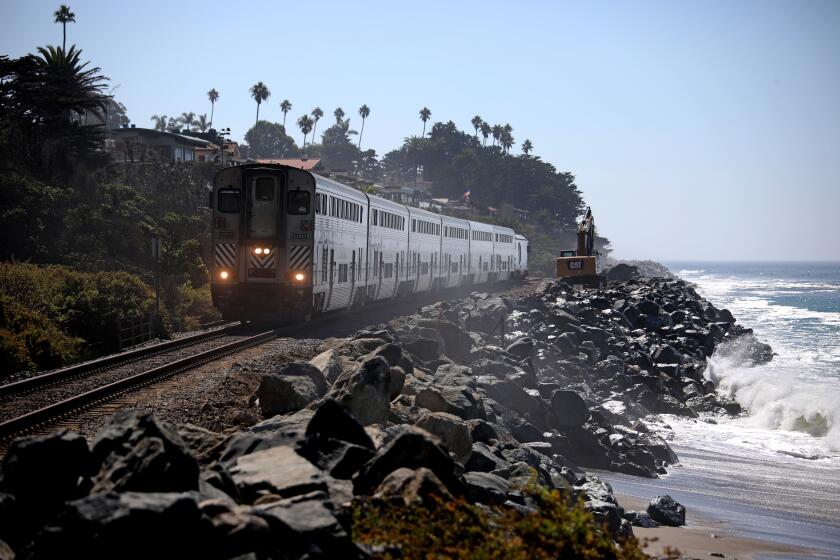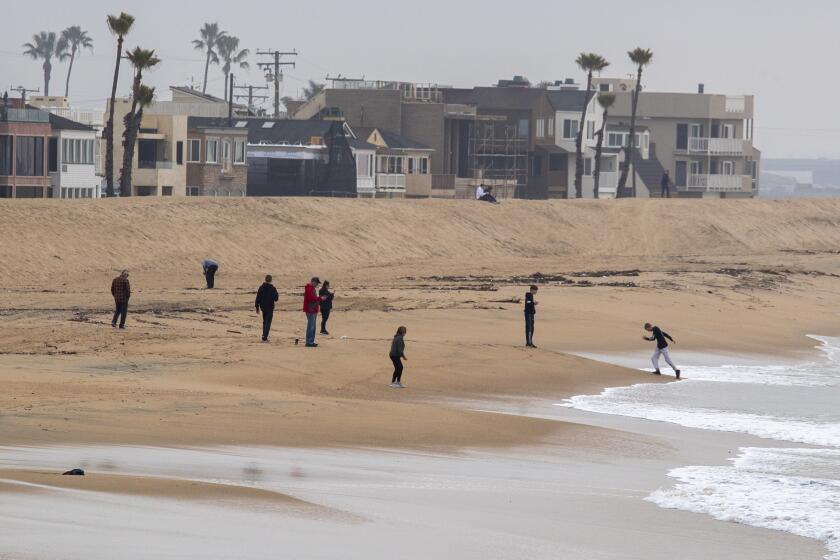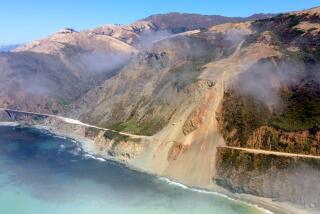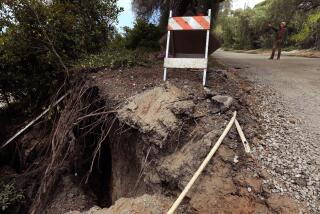Eroding hillside under San Clemente railway spared by storm, but more rain is coming
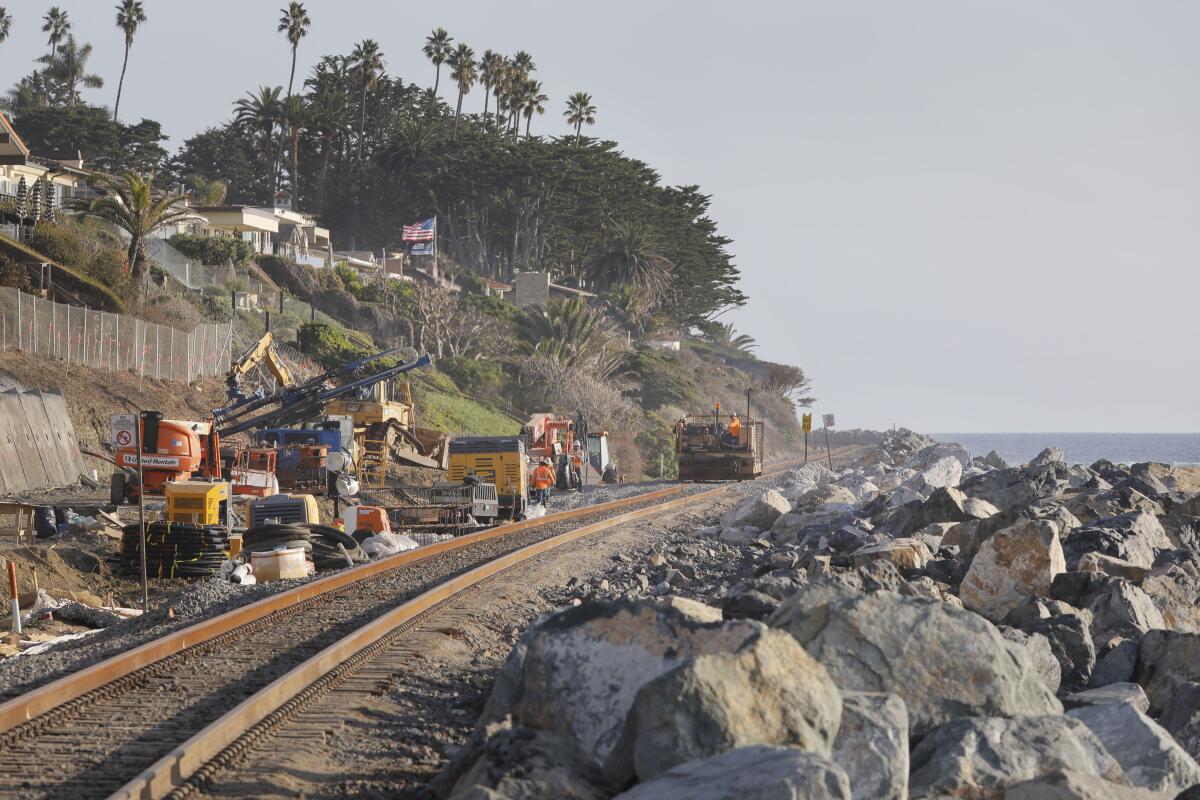
Contractors continued working through this week’s rain on the San Clemente hillside stabilization project that has shut down passenger rail service between Orange and San Diego counties, and they could be affected by more storms in the week ahead.
Passenger train traffic across the work site between Oceanside and San Clemente has been suspended since Sept. 30, when new movement was discovered in a recurring landslide that has pushed the tracks more than 28 inches toward the ocean since September 2021. Freight services continue, but less frequently and at slower speeds.
Since October, crews have placed tons of additional boulders along the beach at the bottom of the slope and they now are installing tiebacks above the tracks to anchor the hillside into the bedrock.
“Loose soil and open trenches or holes where water can accumulate are routinely covered when heavy rains are expected,” Eric Carpenter, a spokesman for the Orange County Transportation Authority, said Thursday.
Officials with Metrolink are still responding to recent movement detected in the railway’s foundation near San Clemente after Tropical Storm Kay.
“With the recent king tides, the good news is that no notable movement was detected in the inclinometers,” Carpenter said. The inclinometers are electronic devices placed in the slope that transmit real-time measurements of any ground movement.
Most coastal areas of San Diego and Orange counties got a little over half an inch of rain this week.
Crews on the job have been working 12-hour shifts on weekdays, though they will be off for the New Year’s weekend Saturday through Monday.
A storm arriving Saturday is expected to bring up to 1.5 inches of rain to areas west of the mountains, according to the National Oceanic and Atmospheric Administration, with a chance of more rain later next week.
The National Weather Service projects that a 7-foot king tide will hit Orange County beaches Friday and Saturday between 7 and 9 in the morning.
Also, another round of king tides, the highest of the year, will return in late January. High tides also contribute to coastal erosion.
The San Clemente stabilization work is scheduled to be finished in February, although the series of storms could affect the schedule.
Progress so far includes the drilling of the first row of 104 tiebacks, Carpenter said. About 50% to 60% of those tiebacks have been stressed and locked off, with the rest of the row to be completed by mid-January. Excavation for the second, lower row of the two rows being installed will begin after the first row is completed.
The 700-foot-long repair site is one of several spots threatened by coastal erosion along the only railroad connecting San Diego with Los Angeles and the rest of the United States.
Another storm is forecast to arrive early Thursday in Southern California. But the rain is expected to be lighter.
The North County Transit District inspects erosion-prone areas such as the Del Mar bluffs any time a 50% or greater chance of rain is predicted along the 60-mile rail corridor in San Diego County, said Chris Orlando, chief planning and communications officer for the district.
“During rain events, NCTD’s contractor and staff provide an inspector 24/7 to monitor the Del Mar bluffs area and other high priority drainage areas,” Orlando said. “NCTD also has an on-call engineering firm to address any geotechnical or drainage issues that may arise.”
Post-storm inspections of those areas occur any time NOAA records more than half an inch of rain in a single day or in consecutive days without 48 hours of dry weather in between, he said.
One of the biggest bluff collapses in recent years occurred Nov. 29, 2019, a day after Thanksgiving. The 40-foot cliff sheared away to within a few feet of the rails, requiring extensive repairs to keep the tracks safe.
More to Read
Sign up for Essential California
The most important California stories and recommendations in your inbox every morning.
You may occasionally receive promotional content from the Los Angeles Times.
